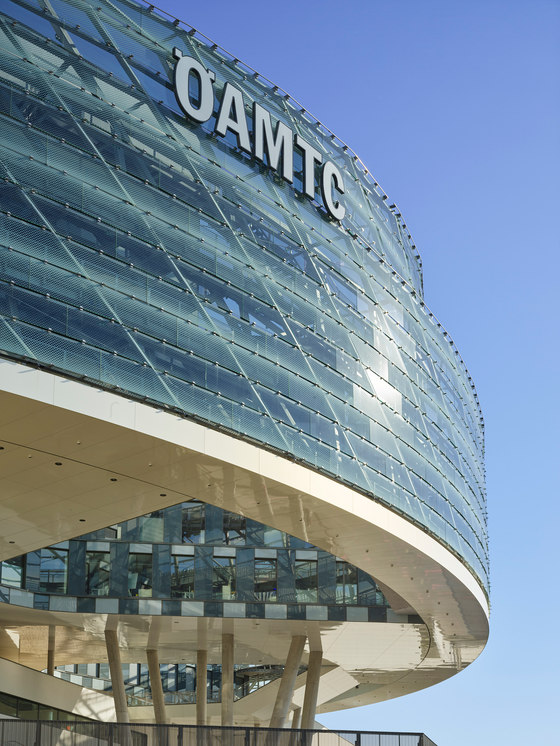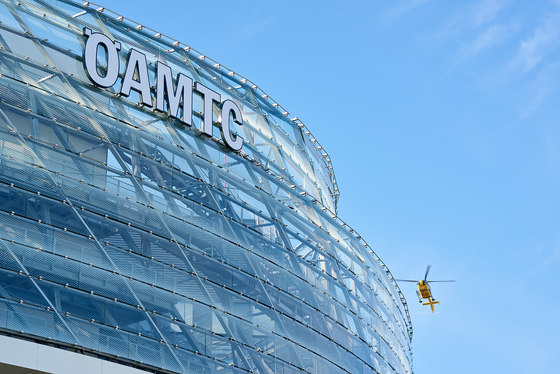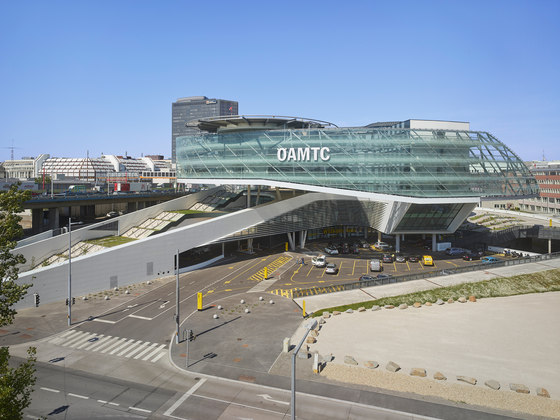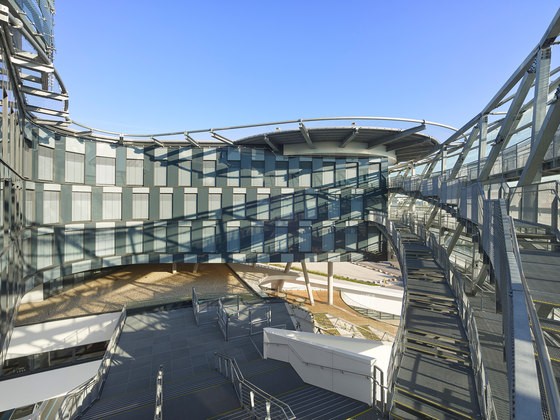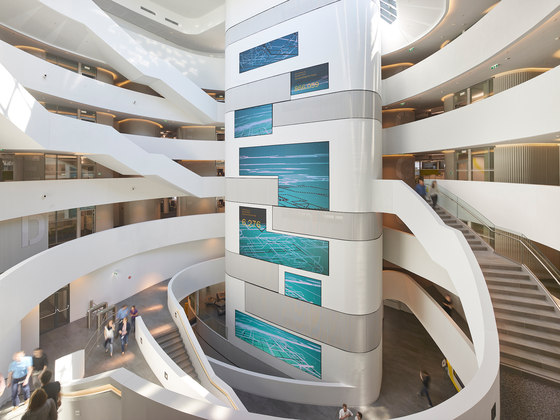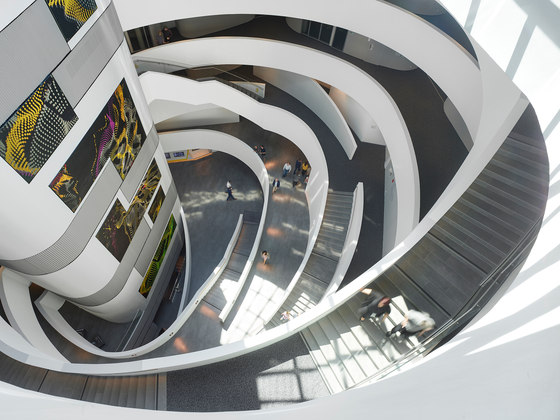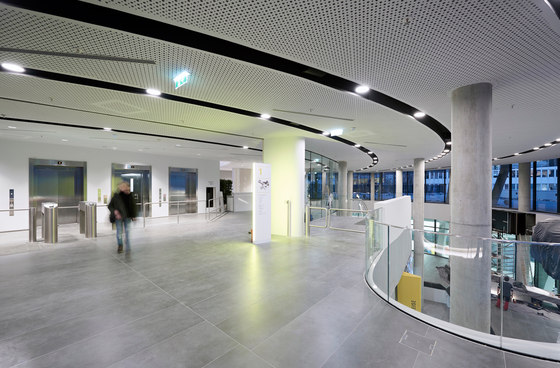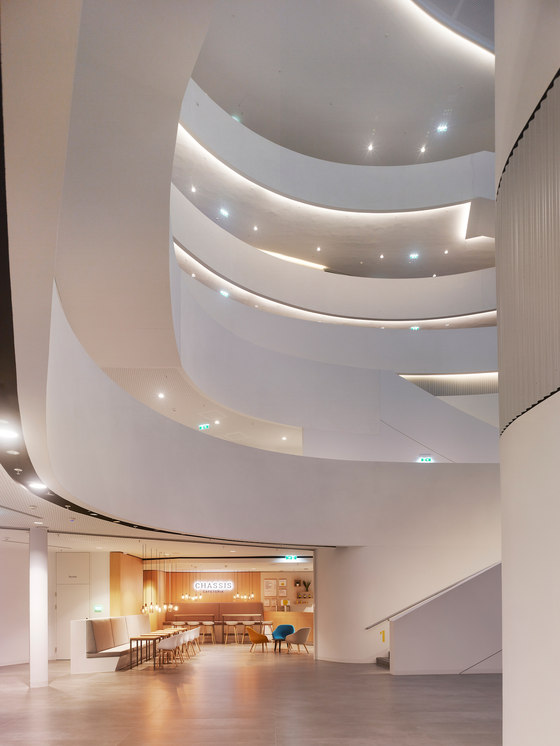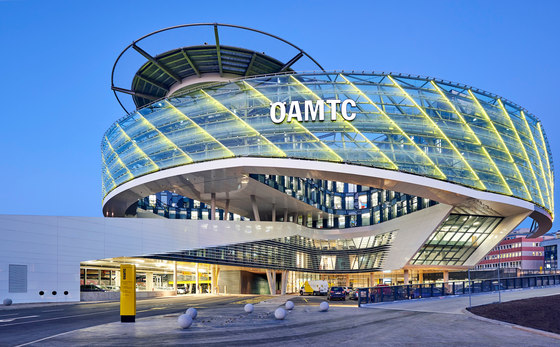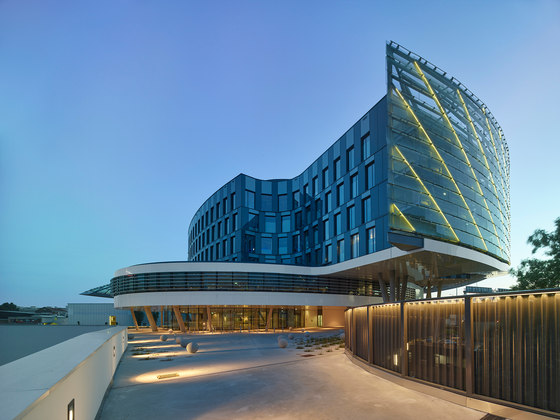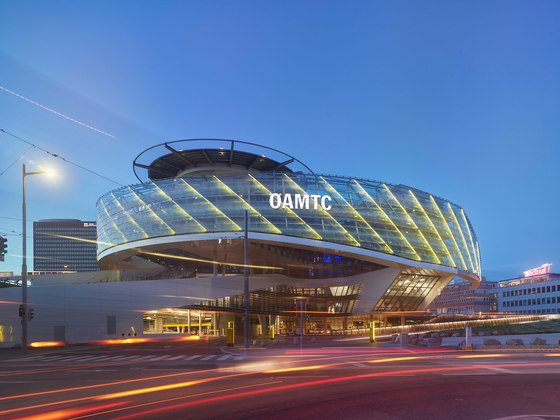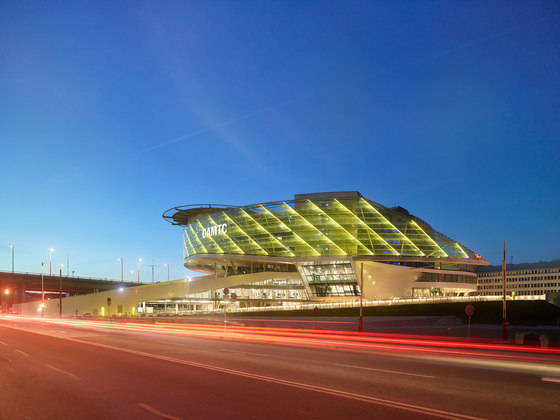ÖAMTC – the support point
From the service workshops to the heliport all the elements of the programme are laid out along a single vertical axis, i.e. also from the counter to the reception and the event areas to the large atrium of the offices. Logistically compact contents with high degree of efficiency, which is essentially what support points are, are here transformed and applied to the building in a translated form.
ÖAMTC – transparency
On approaching the counter you find yourself on an oversized glazed cockpit, in the middle of the workshop one level below, where the mechanics have driven the cars that have just been handed over to them down a ramp. The clients can comfortably view all of this from above – if their car is raised they see it “eye to eye”, as it were. From the counter a generously sized void opens upwards, through which a prominent stairs leads to the lobby. You also enter the building on this level if you come by foot from the U3 metro station at Erdberg, a short distance away. The building – and with it the ÖAMTC – is open to everyone in all directions.
ÖAMTC – communication
All the parts of the building communicate with each other – but communication outwards is also important. This takes place in the public/semi-public area: the events hall, conference rooms, and TV studio are on the entrance level, on the level above is the highly important call-centre, which is indeed constantly on-line and in contact with the outside world and which is emphatically and functionally made as a centralized space. All these areas are organised around a two-storey foyer. This is also the first level of the large office atrium, from which routes and visual connections lead upwards. This completes the internal flow of communication.
ÖAMTC – the sign
The building is a sign, a symbol of mobility. Its unique, circular and star-shaped form emphatically conveys the fact that here everything revolves around mobility and the means related to it and at the same time demonstrates the efficiency and speed of the organization. Therefore both in formal terms and as regards content, it is a coherent, architecturally articulated symbol of an organization headquarters and for viewers and users evokes at all levels the feeling of having a strong and reliable partner.
It is also a sign of the business’s self confident understanding of itself, with which staff and members can identify – with excellently organized, harmonized facilities offering a high level of interaction and communication, expressed in the form of clear, open and transparent spatial connections oriented to meeting the needs of customers and staff alike.
ÖAMTC – the landmarkbuilding
Through its shape the ÖAMTC headquarters clearly and deliberately distinguishes itself from the monotonous, yet heterogeneously scattered, block and slab-type buildings in the surroundings whose form is derived exclusively from their commercial and industrial contents and optimising their functions. Here, in contrast, the focus is far more on the social components of aid and support and being integrated in a network of service and care – both as a communication factor in the macro area of the building’s overall structure and in the layout of the individual organisational units.
The icon stands in a park and garden-like landscape which develops on the one hand on the roof of the multi-storey car park and the escape staircases, on the other along the connecting clasp between the U3 and Baumgasse that is kept free of buildings.
Pichler & Traupmann: Johanna Maria Priebe (project leader) Barbara Aull Christoph Degendorfer Andrea Ehrenreich Mohammad Ekhlasi Peter Grandits Alexander Grass Clemens Hasler Barbara Jarmaczki Joachim Kess Bartosz Lewandowski Till Martin Daniel Moral Trigueros


